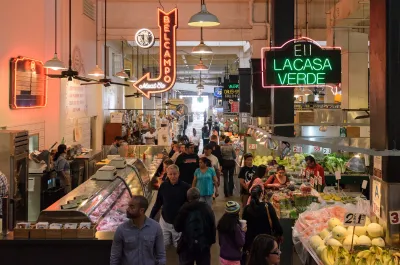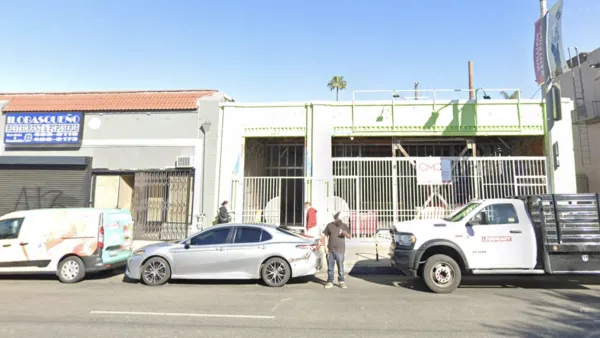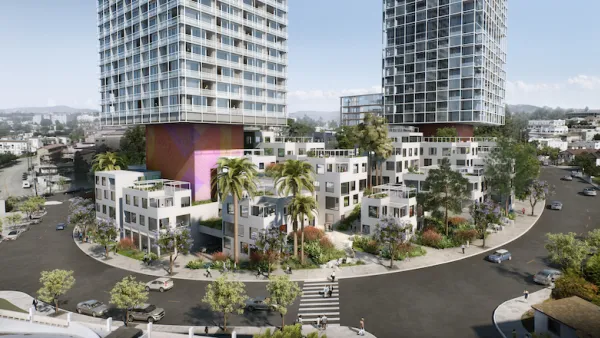The historic Grand Central Market has ridden the ups and downs of Downtown Los Angeles better than most retail locations, but can it retain its heart in the face of gentrification.

Opened in 1917, L.A.'s Grand Central Market located between the gleaming new towers of Bunker Hill and the historic downtown, has been an incubator for small grocers and retailers—mostly immigrants who came in waves to the United States during much of the 20th Century. Now, the gentrification of downtown Los Angeles is changing the market once again. As Jesse Katz reports in Los Angeles Magazine, the changes to the market have seen long time tenants replaced by more "upscale" food operations that cater to the wealthier and whiter clientele that have filled the new apartment and condos that have sprung up all over downtown.
The shorthand for everything happening at Grand Central is, of course, gentrification, a term whose meaning has been muddled and politicized. It can stand for dislocation, the loss of control that has piqued working-class communities of color across L.A., where moneyed interests have been pressuring rents and disrupting folkways. It can also stand for the regeneration of communities that have suffered isolation and neglect, undoing white flight, making them more diverse, not less. Befitting a city built largely by people from somewhere else, both versions on occasion happen in the same place, at the same time.
As the market's tenants and ownership has changed, uncertainty remains. Several lawsuits against the market's current owner allege that long time tenant were kicked out in favor of Caucasian operators.The Grand Central Market, as Katz writes, remains on either the cusp of bankruptcy or losing it's historic attachment to the immigrant communities that have operated the market's stalls for nearly 100 years.
FULL STORY: Inside the Gentrification of Grand Central Market

Analysis: Cybertruck Fatality Rate Far Exceeds That of Ford Pinto
The Tesla Cybertruck was recalled seven times last year.

National Parks Layoffs Will Cause Communities to Lose Billions
Thousands of essential park workers were laid off this week, just before the busy spring break season.

Retro-silient?: America’s First “Eco-burb,” The Woodlands Turns 50
A master-planned community north of Houston offers lessons on green infrastructure and resilient design, but falls short of its founder’s lofty affordability and walkability goals.

Test News Post 1
This is a summary

Analysis: Cybertruck Fatality Rate Far Exceeds That of Ford Pinto
The Tesla Cybertruck was recalled seven times last year.

Test News Headline 46
Test for the image on the front page.
Urban Design for Planners 1: Software Tools
This six-course series explores essential urban design concepts using open source software and equips planners with the tools they need to participate fully in the urban design process.
Planning for Universal Design
Learn the tools for implementing Universal Design in planning regulations.
EMC Planning Group, Inc.
Planetizen
Planetizen
Mpact (formerly Rail~Volution)
Great Falls Development Authority, Inc.
HUDs Office of Policy Development and Research
NYU Wagner Graduate School of Public Service




























